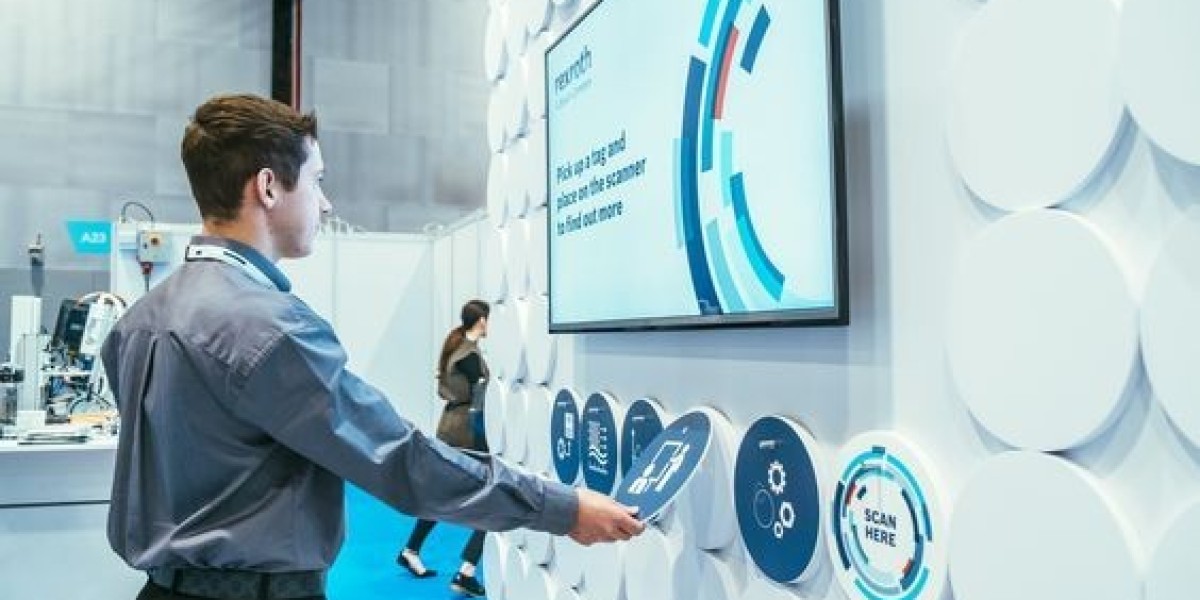What Is an Interactive Media Display?
An interactive media display is a screen or projection system that allows users to engage with content in real-time. Unlike traditional displays, these systems respond to touch, gestures, sensors, voice commands, or even mobile devices, creating a dynamic two-way interaction.
Touchscreen kiosks, gesture-controlled digital walls, and augmented reality projections are all examples of interactive displays encouraging consumers to actively participate rather than passively observe.
Why Interactivity Matters for Brands
Modern audiences are bombarded with advertising across countless platforms. To stand out, brands need more than just visibility—they need engagement. Interactivity increases dwell time, emotional connection, and memory retention, all of which are critical in influencing consumer behavior.
By using interactive media displays, brands can:
Encourage longer and more meaningful consumer interactions
Gather real-time feedback and behavioral data
Reinforce brand messaging through personalization
Create memorable, shareable moments
In essence, interactive displays are tools for storytelling—ones that place the consumer at the center of the narrative.
Enhancing Brand Presence in Physical Spaces
Despite the growth of digital marketing, physical experiences still matter. Retail stores, events, and exhibitions are powerful touchpoints where brand impressions can be made—especially when enhanced with interactive media.
1. Retail Environments
In-store displays equipped with interactivity can guide customers, recommend products, or provide detailed information through a simple touch. For example, an interactive media display placed at the entrance of a fashion store can offer style guides, and promotions, or even let shoppers browse inventory that isn’t on shelves.
2. Trade Shows and Activations
Trade shows and corporate events are prime opportunities for brands to make a lasting impact. An experiential marketing agency can design booth experiences that utilize interactive media to attract foot traffic and create buzz.
Imagine a large digital wall that reacts to movement or a screen that lets visitors “build” their own product version—it’s these immersive touches that differentiate brands from the competition.
Strategic Functions of Experiential Marketing Firms
While any business can buy an interactive display system, crafting a strategic experience around it requires expertise. That’s where an experiential marketing agency comes in.
These agencies specialize in creating live brand experiences that engage emotions and senses. They combine creativity, psychology, and technology to deliver campaigns that resonate deeply with target audiences.
An experiential marketing agency will typically handle:
Audience research and experience design
Custom content creation for interactive platforms
Hardware and software integration
On-site deployment and support
Metrics tracking and performance analysis
By collaborating with professionals, brands can ensure that their interactive display initiatives are not just visually impressive, but also aligned with business goals.
Applications Across Industries
Interactive media displays are not limited to one sector—they are versatile tools that can be tailored to different industries.
Retail Settings
From virtual try-ons to smart mirrors, retailers are using interactivity to merge convenience with personalization. Shoppers feel more connected to brands when the experience feels tailored to them.
Academic Settings
Schools and museums use interactive displays to make learning more engaging. From touchscreen learning stations to augmented exhibits, information is better retained when it’s experienced, not just seen.
Medical Sector
Hospitals and clinics use interactive kiosks for wayfinding, patient check-ins, and health education. This enhances productivity while minimizing manual processes.
Real Estate
Interactive floor plans and 3D walkthroughs allow potential buyers to explore properties in depth. An interactive media display in a real estate office can serve as a dynamic sales tool.
Hospitality and Tourism
Hotels, resorts, and travel agencies use touch-enabled displays to showcase experiences, book services, and provide guests with local information in an intuitive way.
Measurable Benefits for Brands
One of the biggest advantages of using interactive technology is data. Brands can track how many people engaged, which content they interacted with, and how long they stayed.
These insights allow companies to:
Refine content and improve user journeys
Identify trends in customer preferences
Personalize future marketing efforts
Prove ROI more effectively to stakeholders
With this level of feedback, every campaign becomes smarter and more targeted over time.
Real-World Example: A Brand Activation Case Study
To illustrate the power of this strategy, consider a beverage brand that launched a summer campaign at a beach festival. They partnered with an experiential marketing agency to set up a large outdoor interactive screen.
The display allowed visitors to create their virtual mocktail using touch and gesture controls. After mixing their drink, users received a personalized bottle label and a social media-ready video of their creation.
The outcome?
Over 10,000 user interactions in 3 days
50% increase in social media mentions for the brand
A spike in regional sales of the product within a month
This campaign not only boosted visibility but also built emotional connections with consumers through participation.
Future of Interactive Media in Branding
As technology advances, so does the potential of interactive media displays. Integration with AI, AR/VR, and the Internet of Things (IoT) will lead to even more personalized and intelligent experiences.
Voice-activated assistants, biometric recognition, and haptic feedback are some of the innovations that will soon be part of the interactive toolkit. Brands that adopt these early, with the help of a forward-thinking experiential marketing agency, will have a strong competitive edge.
Conclusion: A New Era of Engagement
Interactivity is not a trend—it’s the future of brand communication. Interactive media displays allow brands to turn viewers into participants and create real connections that drive loyalty and conversions.
To fully maximize this potential, collaboration with an experiential marketing agency is essential. These specialists don’t just install screens—they craft unforgettable experiences.
In a crowded marketplace, the brands that thrive will be the ones that engage, immerse, and inspire. And that journey begins with a touch, a gesture, or a glance—powered by the right technology and a vision for impact.







